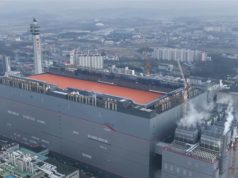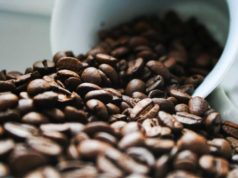Today in Munich Huawei is releasing the covers on their new flagship smartphone. The Mate 9 follows the 8 and 7 as the leading devices under the Huawei brand, each featuring the latest generation HiSilicon Kirin SoC announced at roughly the same time. The SoC in this one is the Kirin 960, as we detailed a couple of weeks ago, and features the first outing of ARM’s new Cortex A73 CPU cores as well as the first public implementation of the new ARM Mali-G71 graphics core. Huawei has paired this will an all new CDMA capable Category 12 integrated modem with quad carrier aggregation (4CA) and 4×4 MIMO (at 2CA). The Mate 9 itself is the SoC with an aluminum design with a 5.96-inch Full HD (1920×1080) LCD display, EMUI 5.0, dual Leica rear cameras, and Google DaydreamVR support.
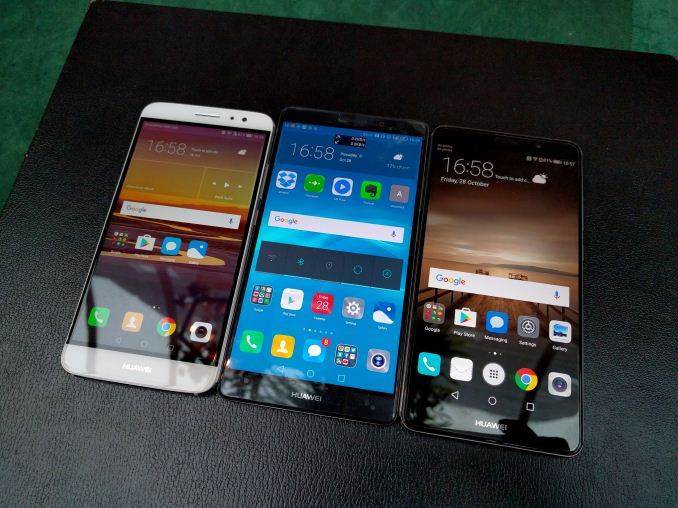 Nova Plus, Mate 8, Mate 9
Nova Plus, Mate 8, Mate 9
As mentioned in our Kirin 960 piece, Huawei (in the Mate 9) is advertising +18% performance on the CPU and +180% on the GPU compared to the Kirin 950 in the Mate 8. The CPU uplift comes from the move to A73 cores over A72, and the GPU is from a doubling from MP4 to MP8 on the GPU along with a new GPU architecture, Bifrost. The CPU and GPU are connected with a new lower power interconnect, ARM’s CCI-550, which was promoted as part of ARM’s CCI-500 family as offering better efficiency and lower power than the previous generation CCI-400 series. Andrei and Ryan’s pieces on both the A73 ‘Artemis’ microarchitecture and the G71 ‘Bifrost’ architectures are well worth the read. For the Mate 9, Huawei is using TSMC’s latest 16FFC process – this is a lower cost variant of the original 16FF+ and should be the same 16FFC we see in Apple’s A10 cores. Numerous outlets have compared the fact that Huawei is launching a 16nm flagship while others are preparing to launch 10nm devices, however if those are indeed 10nm, Huawei still has 4-5 months (Nov to March) before these devices hit the market and we’ll see how they match up in due course.
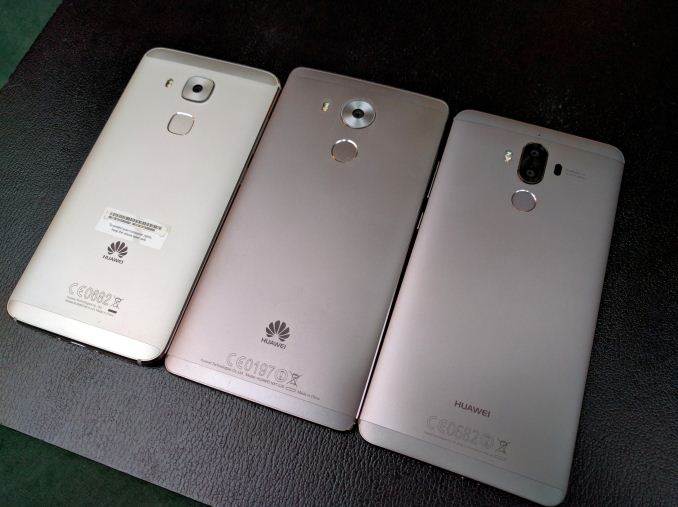
Nova Plus, Mate 8, Mate 9
Over the past twelve months, the two key devices in Huawei’s portfolio have been the Mate 8 and the P9, so naturally one would expect the dual camera feature of the P9 to migrate to the flagship Mate series device. The Mate 9 has two cameras, and rather than using the dual 12MP sensors in the P9, Huawei is using a 20MP black and white camera in one and a 12MP color camera for the other. The color camera will have optical image stabilization, while both with use up to 4K EIS via the internal DSP. With the dual camera design, Huawei is advertising effects such as post processing bokeh, and a ‘hybrid 2x zoom’ function which crops the 20MP image to a 12MP image to give the effect of zoom. Leica is still practically involved with the branding, apparently assisting with the lenses and the software. Also into the Mate 9 repertoire are a series of effects from previous generations of flagships, such as light painting, but the new device will support Beauty Mode recording and slo-mo recording up to 240fps in 720p/HD mode (although not beauty and slo-mo at the same time). Both rear cameras are set at f/2.2, while the front camera is an 8MP with autofocus and f/1.9.
| Huawei Mate Series | |||
| Mate 7 | Mate 8 | Mate 9 | |
| SoC | HiSilicon Kirin 925 4x A7 @ 1.3 G 4x A15 @ 1.8G T628MP4 @ 0.6G |
HiSilicon Kirin 950 4x A53 @ 1.8 G 4x A72 @ 2.3 G T880MP4 @ 0.9 G |
HiSilicon Kirin 960 4x A53 @ 1.8 G 4x A73 @ 2.4 G G71MP8 @ 0.9 G |
| RAM | 2GB/3GB | 3/4GB LPDDR4 | 4 GB LPDDR4-1800 |
| NAND | 16GB 32GB eMMC 4.0 |
32GB 64GB 128GB eMMC 5.0 |
64 GB 128 GB UFS 2.1 |
| Display | 6″ 1080p LCD | 6” 1080p JDI IPS-Neo LCD | 5.96″ 1080p LCD |
| Modem | LTE Cat 6 | 2G/3G/4G LTE Cat 6 | 2G/3G/4G LTE Cat 12 w/CDMA |
| Dimensions | 157 (h) x 81 (w) x 7.9 (d) mm |
157.1 (h) x 80.6 (w) x 7.9 (d) mm |
156.9 (h) x 78.9 (w) x 7.9 (d) mm |
| Weight | 185 g | 185g | ~190g |
| Camera | 13 MP f/2.0 1080p30 video |
16MP ( 4608 × 3456 ) Sony IMX298 1/2.8″ w/ 1.12µm pixels F/2.0 aperture, ?mm eq. |
Dual Rear Camera #1 12MP RGB w/OIS, f/2.2 #2 20MP B/W w/EIS, f/2.2 |
| 5MP f/2.4 720p video |
Front Facing Camera 8MP ( 3264 × 2448 ) Sony IMX179 1/3.2″ w/ 1.4µm pixels F/2.4 aperture, 26mm eq. |
Front: 8MP w/AF F/1.9 |
|
| Battery | 4100 mAh | 4000mAh (15.2 Whr) | 4000 mAh |
| OS | Android 4.2.2 with Emotion UI |
Android 6.0 with EmotionUI 4.0 |
Android 7.0 with EmotionUI 5.0 |
| Connectivity | 802.11a/b/g/n 2.4 & 5 GHz BT 4.0 GPS/GNSS DLNA |
802.11a/b/g/n/ac 2.4 & 5GHz BT 4.2, GPS/GNSS, DLNA, NFC |
|
| USB | 2.0 microUSB | 2.0 microUSB | 2.0 Type-C |
| SIM Size | MicroSIM + NanoSIM (microSD) |
NanoSIM + NanoSIM |
NanoSIM + NanoSIM (microSD) |
| Launch MSRP | 340 Euro | 449-659 Euro | 4GB/64GB: 699 Euro |
For the display, Huawei is promoting a 5.96-inch Full-HD (1920×1080) LED display with a 1500:1 contrast ratio and a tailored ‘2.5D’ glass finish. Color gamut is officially promoted as 96% NTSC. The display will implement the new EMUI 5.0, which as part of our discussions with Huawei’s design team is meant to be geared towards ease of use with most applications designed to be 3 clicks away or less. EMUI 5.0 will also feature a new design philosophy centered on blue and white, citing that the minimalist environment and high contrast mirrors a more concise and relaxing user experience. Given Huawei’s tendency to ship recent devices with blue screens over the past couple of years (either by chance or design), it seems that blue is here to stay. The Mate 9 does feature a low blue light mode to aid using the device at night, and given previous iterations of this feature it typically adjusts the software LUT and jacks up the greens to give a ‘warmer’ feel. As a flagship device commanding a flagship price, it will be interesting to see if Huawei has taken steps towards per-unit color calibration similar to its main competitors.
The Mate 9 will be available in two storage variants, either 64GB or 128GB of UFS 2.1, and each device has 4GB of DRAM. In combination with the new version of EMUI, Huawei has promised a lower base for memory occupation (i.e. OS DRAM residency, which seemed oddly high with the Mate 8). For additional storage, the dual Nano-SIM design will allow for a single memory card in the SIM 2 slot, supporting up to 256 GB. Huawei will promote that both SIM slots, depending on the region, will be able to support 4G at the same time, rather than the 4G/GSM combinations in the past. This will be interesting to see the effect on battery life, with the rated 4000 mAh battery.
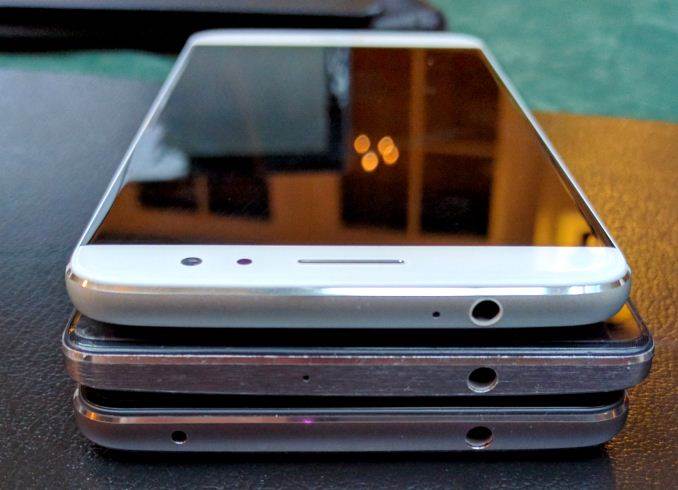
Nova Plus, Mate 8, Mate 9 (top to bottom)
The 4000 mAh battery is being quoted as an ‘all-day’ battery, and Huawei is implementing a ‘SuperCharge’ scheme using an internal controller in both the smartphone and the charging device itself. Rather than the 9V/2A fast charging combinations, Huawei says that SuperCharge uses on-the-fly dynamic voltage adjustments from 3.5-5V with 5A which can offer 3.5 hours of video playback on 10 minutes of charge. As the charger/wallwart being used also has a controller IC implemented, this charging mode can only occur with branded charging devices but this also allows the ICs to communicate regarding temperatures. Charging at high current invariably adds in temperature through losses, and using internal (non-user accessible) phone sensors the temperature of the smartphone can be monitored and charging adjusted as needed. As part of Huawei’s presentation, they are stating that the fast charging temperature of the Mate 9 is better than most (if not all) current high-end smartphones on the market today, offering 58% charge in the first 30 minutes as well. Huawei also clarified that no voltage transformation happens on the phone, and cables adhering to the specification will also be required (the controller IC, or ‘SuperCharge Processor/SCP’, will adjust for the ohmic capacity of the cable). Huawei will also bundle a supercharger for cars as well with the Mate 9.
Connectivity is via a USB 2.0 Type-C connection on the bottom of the phone, and Wi-Fi support is dual-band (2.4 GHz + 5 GHz) 802.11ac 2×2 with Wi-Fi Direct support. This module also supports Bluetooth 4.2 and Low Energy, and with this Huawei is also adding NFC. Next to the Type-C are two speaker grills, and one of the promoted features is the use of four microphones to allow for better recording – one of the promoted software features is a meeting/interview recording mode with various algorithms in place to increase SNR based on input from the various microphones.
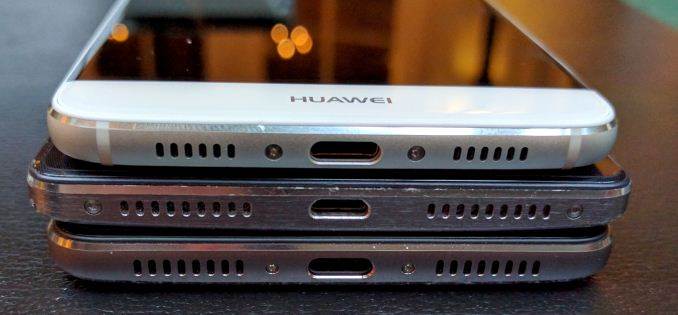
Nova Plus, Mate 8, Mate 9
Having used the Mate 8 for at least six months at this point, I can feel it going slower and more antagonizing to switch apps (at times I multitask as if I’m at my desktop). Huawei has recognized that this is one of the pain points when using ‘most’ devices, so one of the features that Huawei is promoting with the Mate 9 is onboard machine learning, designed to calibrate and optimize the hardware as time goes on to reduce the impact of an aged system. This was described in the form of learning which apps are frequently used and when, and then learning to optimize the storage for contiguous loading as well as prioritize DRAM accesses and CPU instructions for those important apps. Part of this means that applications that have priority will in effect take over up to seven cores on the device, with the remaining cores for background processing. The priority application thus gets more chances to affect the DRAM controller and request storage access, which Huawei says are now also part of the optimization to limit data fragmentation as time goes on and the device is used.
We were able to determine that the machine learning part is both training and inference,…
